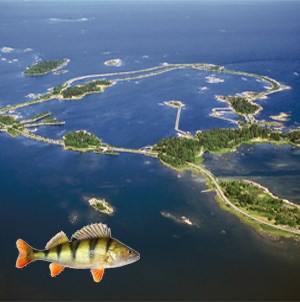Contact
Department of Applied Animal Science and Welfare (former HMH), MOD Göteborg

Understanding the resilience of aquatic ectothermic animals to climate warming has been hindered by the absence of experimental systems experiencing warming across relevant timescales.
Here, we examine European perch (Perca fluviatilis, L.) from the Biotest enclosure, a unique coastal ecosystem that maintains natural thermal fluctuations but has been warmed by 5–10 °C by a nuclear power plant for over three decades.
We show that Biotest perch grow faster and display thermally compensated resting cardiorespiratory functions compared with reference perch living at natural temperatures in adjacent waters.
However, maximum cardiorespiratory capacities and heat tolerance limits exhibit limited or no thermal compensation when compared with acutely heated reference perch.
We propose that while basal energy requirements and resting cardiorespiratory functions (floors) are thermally plastic, maximum capacities and upper critical heat limits (ceilings) are much less flexible and thus will limit the adaptive capacity of fishes in a warming climate.
http://www.nature.com/articles/ncomms11447
Sandblom E, Clark T. D, Gräns A, Ekström A, Brijs J, Sundström L. F, Odelström A, Adill A, Aho T & Jutfelt F (2016). Physiological constraints to climate warming in fish follow principles of plastic floors and concrete ceilings. Nature communications, 7.